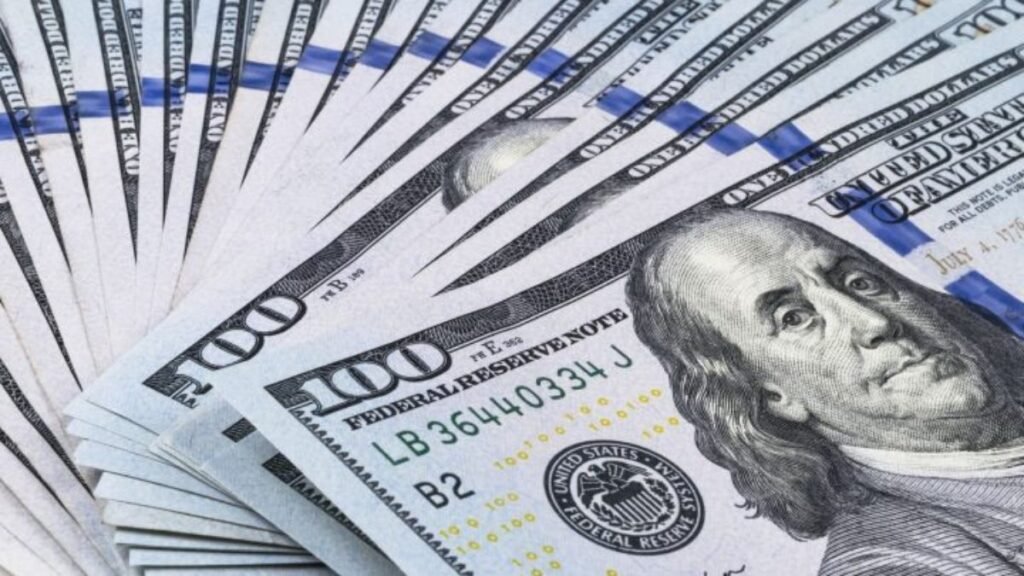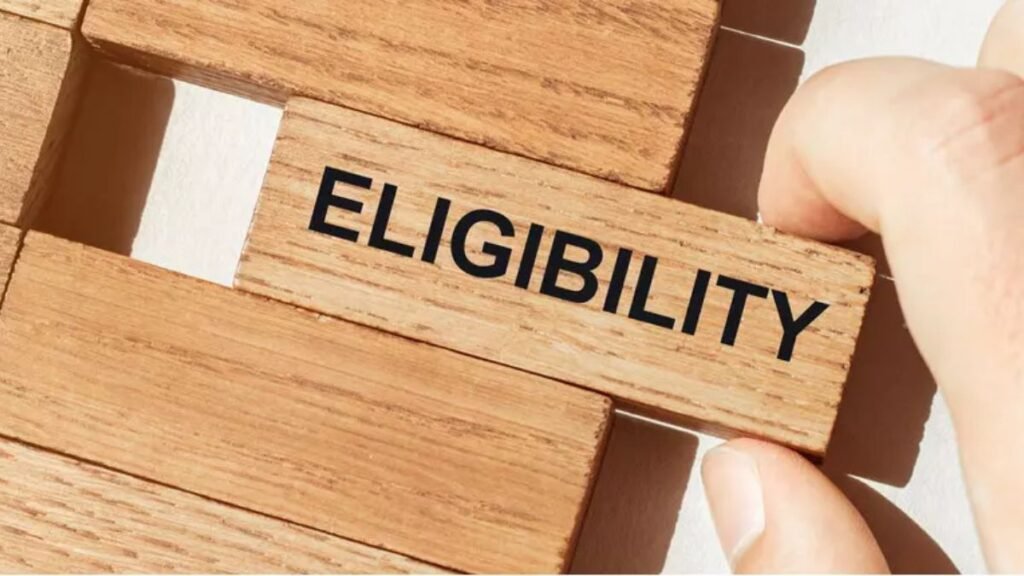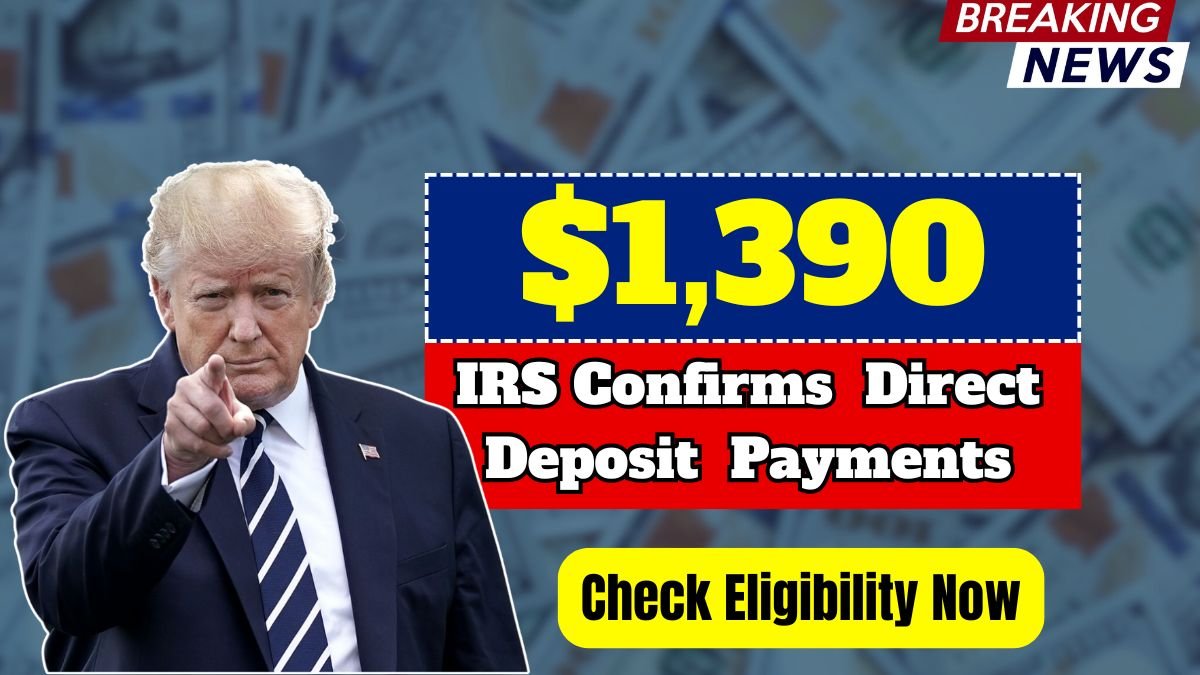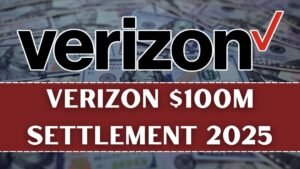Introduction: There’s good news for millions of Americans waiting for financial relief. The IRS (Internal Revenue Service) has confirmed that eligible American citizens will receive a Direct Deposit Relief Payment of $1,390 this year. This payment will be deposited directly into their bank accounts and will prove helpful for many families to cope with inflation and rising living costs.
In this article, we are going to discuss the eligibility requirements, payment processes, payment dates, and how this relief payment will affect the lives of the American public.
What is the IRS $1,390 Relief Payment?
This payment issued by the IRS is part of a financial relief plan. Its primary purpose is:
- Minimize the impact of inflation: providing relief for everyday necessities like groceries, fuel, and rent.
- Provide immediate financial assistance to American citizens: especially those with low incomes or experiencing financial hardship.
- Stimulating the US Economy: When citizens use this money at local businesses, it boosts economic activity.
- The $1,390 amount has been specifically set this year to provide appropriate relief to the needs of ordinary citizens.
Who is eligible for this payment?
The IRS has provided clear eligibility guidelines. To receive this payment, citizens must meet the following conditions:
- Income Threshold: Generally, your income for this payment will be determined based on your 2023 and 2024 tax returns. If your income is in the low or moderate tier, you will be eligible.
- Tax Filing Status: Citizens filing individual or joint returns. If you submitted your tax returns on time, the payment will be automatically issued.
- Direct Deposit Information: Those whose bank account information is available to the IRS will receive this payment directly into their bank accounts.
- The IRS has clarified that those who do not file their tax returns or update their bank details will receive payments via paper check.
How will the payment be received?

- Direct Deposit: This is the fastest and most secure method. If you have provided the IRS with your bank account details, $1,390 will be transferred directly to your account.
- This process is usually completed within a few days, and you can receive the payment immediately.
- Paper Check: For citizens whose bank details are not available, a paper check will be sent.
- This may take time, and the check will be received by mail.
- E-Payment: The IRS has also facilitated digital payment options so that citizens can receive payments quickly and securely.
Payment Dates
- The IRS has announced payment dates. Direct Deposits are typically issued first, followed by paper checks.
- Direct Deposit: Starting the last week of October 2025
- Paper Checks: Will be sent to almost all eligible citizens by November 2025
- It’s important to note that the exact payment date will depend on your tax return filing status and bank details.
How to Check Your Eligibility

The IRS has provided a simple process for citizens:
- Visit the IRS Official Website.
- Click on the option “Get My Payment” or “Payment Status.quot;
- Type in your SSN, date of birth, and address.
- Your payment status and date will appear on your screen.
- This will confirm your eligibility to receive the $1,390 Relief Payment.
Importance of the Payment
The importance of this payment goes beyond the cash; it embodies a spirit of trust and cooperation between the citizens and their government.
- Inflation Assistance: This aids in controlling grocery, rent, and energy costs.
- Economic Boost: Spending money at a local business, rather, improves activity in the economy.
- Economic Security: It helps in ensuring financial stability for families with low incomes.
- Emergency Savings: Many save the money in their savings account for use in emergencies.
How is the payment different from other relief programs?
- This payment, provided by the IRS, is not made annually or regularly, but provides financial relief directly to citizens.
- It is determined automatically based on legal tax filings and banking details.
- It is not dependent on any state-specific program and is implemented at the federal level.
Government Guidelines and Warnings
- The IRS cautions citizens never to share this payment information through personal email or phone calls.
- To avoid fraud, only use the IRS’s official website or phone line.
- Be wary of any suspicious links or messages.
How to benefit from this payment
- Use it for essential expenses: groceries, rent, and energy bills
- Savings or investments: Save for emergencies or children’s education
- Support local businesses: Boost local economic activity
Conclusion
The $1,390 Direct Deposit Relief Payment confirmed by the IRS is a vital source of economic relief and security for millions of Americans this year. This payment is not just about financial assistance, but also a symbol of stability and confidence for citizens in volatile economic conditions. If you are eligible for this payment, it’s important to check your tax return and bank statement as soon as possible to ensure the payment arrives in your account on time. In fact, this is not just a payment, but a bond of cooperation and trust between the government and citizens.
FAQs
Q1. What is the $1,390 IRS Direct Deposit Relief Payment?
A. It is a financial relief payment provided by the IRS to eligible U.S. taxpayers to help with living expenses and inflation.
Q2. Who is eligible to receive this payment?
A. Eligible recipients are U.S. citizens or legal residents whose income falls within the IRS-defined limits and who have filed their 2023 or 2024 tax returns.
Q3. When will the payment be issued?
A. Direct deposit payments begin in October 2025, while paper checks may take longer and will be sent in the following weeks.


